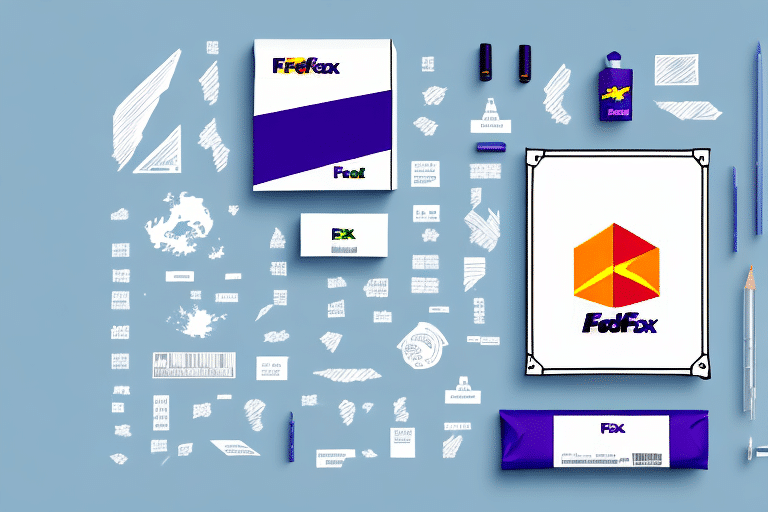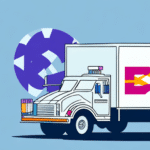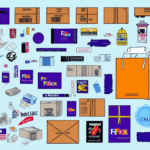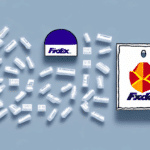Understanding Hazmat Regulations and Requirements
Shipping hazardous materials (hazmat) involves navigating a complex framework of regulations to ensure safety and compliance. The Federal Aviation Administration (FAA) and the U.S. Department of Transportation (DOT) are primary regulators overseeing the transportation of hazardous materials. Adhering to their guidelines is crucial to avoid legal repercussions and ensure the safe handling of dangerous goods.
Regulatory Agencies
Several agencies regulate the transport of hazardous materials in the United States:
- Federal Aviation Administration (FAA): Oversees the safe transport of hazardous materials by air.
- Department of Transportation (DOT): Regulates all modes of transportation, including ground and maritime.
- Occupational Safety and Health Administration (OSHA): Ensures workplace safety, including the handling of hazardous materials.
Classification of Hazardous Materials
Hazardous materials are categorized into nine classes based on their properties and potential hazards. Understanding these classifications is essential for proper packaging, labeling, and documentation. For example:
- Class 1: Explosives
- Class 2: Gases
- Class 3: Flammable Liquids
Compliance and Consequences
Non-compliance with hazmat regulations can lead to severe consequences, including hefty fines, legal actions, and environmental harm. According to the OSHA, violations can result in fines up to $191,401 per violation for serious infractions.
Staying updated with regulatory changes is vital, as hazmat regulations are frequently revised to incorporate new safety standards and technological advancements.
Setting Up and Navigating FedEx Ship Manager
FedEx Ship Manager is a comprehensive tool designed to streamline the shipping process, including hazmat shipments. Setting up an account and familiarizing yourself with its features can significantly enhance your shipping efficiency.
Setting Up a FedEx Ship Manager Account
To begin using FedEx Ship Manager for hazmat shipments, you need a FedEx account. Registration involves providing basic information such as your name, business details, and contact information. Once registered, you can access a suite of shipping tools tailored to your needs.
FedEx Ship Manager Dashboard
The dashboard serves as the central hub for managing all your shipments. Key features include:
- Shipment Creation: Initiate new shipments with detailed information.
- Tracking: Monitor the real-time status of your packages.
- Documentation Access: Easily access and manage all necessary shipping forms and labels.
Advanced Features
For frequent shippers, FedEx Ship Manager offers advanced functionalities such as:
- Automated Shipping Preferences: Save and apply preferred shipping settings to expedite the process.
- Custom Reporting: Generate detailed reports to analyze shipping patterns and costs.
- Multi-Account Management: Handle multiple accounts seamlessly within a single login interface.
Preparing and Managing Hazmat Forms with FedEx Ship Manager
Accurate preparation and management of hazmat forms are critical for compliant shipping. FedEx Ship Manager facilitates the creation, editing, and printing of all necessary documentation.
Creating Hazardous Materials Declarations
FedEx Ship Manager allows you to generate the Dangerous Goods Declaration, a key document detailing the nature and quantity of hazardous materials being shipped. This declaration must be completed accurately to avoid shipment delays or rejections.
Entering Shipment Information
When creating a shipment, input essential details such as:
- Shipper and consignee information
- Package weight and dimensions
- Hazard class and UN number
- Special handling instructions
Printing Labels and Documentation
Once all information is entered, FedEx Ship Manager enables you to print:
- Shipping labels with hazard warnings
- Necessary documentation, including the Dangerous Goods Declaration
- Waterproof envelopes for sensitive materials
Packaging and Labeling Hazmat Shipments Correctly
Proper packaging and labeling are non-negotiable aspects of shipping hazardous materials. Adhering to these standards ensures the safety of personnel, the public, and the environment.
Packaging Requirements
Hazardous materials must be contained in strong, leak-proof packaging that can withstand transportation stresses. Specific requirements vary based on the hazard class:
- Corrosive Materials: Use containers resistant to corrosion.
- Flammable Liquids: Utilize containers designed to prevent leaks and spills.
Labeling Guidelines
Each package must display appropriate hazard warning labels, including:
- UN Number: A four-digit identifier for hazardous substances.
- Proper Shipping Name: Official name of the hazardous material.
- Hazard Class Labels: Specific symbols indicating the type of hazard.
Incorrect labeling can result in shipment refusals, fines, and increased risk of accidents.
Documentation Placement
All required documentation should be placed in waterproof envelopes attached to the package's exterior. This ensures that essential information is accessible during transit and in case of inspections.
Best Practices and Tips for Shipping Hazmat Materials
Implementing best practices ensures the safe and efficient shipping of hazardous materials. These strategies help mitigate risks and enhance compliance.
Ensure Personnel Training
Only qualified and trained personnel should handle and manage hazmat shipments. Proper training reduces the risk of accidents and ensures familiarity with regulatory requirements.
Double-Check Documentation
Always review all shipped documents for accuracy and completeness. Errors in documentation can lead to shipment delays, fines, or safety hazards.
Use Proper Packaging Materials
Invest in high-quality packaging materials designed for hazardous substances. This minimizes the risk of leaks, spills, and other accidents during transportation.
Choose the Right Transportation Mode
Select the most appropriate transportation method based on the nature of the hazardous material, delivery timelines, and cost considerations. Different modes may have varying regulatory requirements.
Stay Updated with Regulations
Regularly review regulatory updates from official sources to ensure ongoing compliance. Staying informed helps anticipate and adapt to changes in hazmat shipping standards.
Utilize FedEx Ship Manager Features
Leverage the advanced features of FedEx Ship Manager to streamline your shipping process. Automated tools can help maintain consistency and reduce the likelihood of human error.
Managing Costs and Troubleshooting with FedEx Ship Manager
Effective cost management and the ability to troubleshoot common issues are essential for maintaining efficient hazmat shipping operations.
Managing Shipping Costs
Hazmat shipments often incur additional fees due to the specialized handling required. FedEx Ship Manager offers tools to:
- Calculate Shipping Costs: Input package dimensions and weight to estimate expenses accurately.
- Access Discount Programs: Take advantage of FedEx's discount offerings to reduce shipping costs.
- Optimize Packaging: Use appropriate packaging to minimize dimensional weight charges.
Troubleshooting Common Issues
Common challenges when using FedEx Ship Manager for hazmat shipments include:
- Connectivity Problems: Ensure a stable internet connection when accessing the Ship Manager tool.
- Data Entry Errors: Carefully enter all shipment details to prevent system rejections.
- Label Printing Issues: Use compatible printers and ensure proper label formatting.
If you encounter issues, refer to FedEx's online support resources or contact their customer service for assistance.
Cost-Saving Strategies
Implement strategies to manage and reduce shipping costs, such as:
- Consolidating Shipments: Combine multiple shipments to take advantage of bulk rates.
- Choosing Economical Shipping Options: Select shipping speeds and services that balance cost and delivery time.
- Regularly Reviewing Shipping Practices: Analyze shipping patterns to identify opportunities for cost savings.
Conclusion
Successfully shipping hazardous materials requires a thorough understanding of regulations, meticulous preparation, and the effective use of tools like FedEx Ship Manager. By following best practices, staying compliant with regulatory requirements, and utilizing the features offered by FedEx, you can ensure the safe and efficient transportation of hazmat shipments. Always prioritize safety and compliance to protect individuals, the environment, and your business operations.




















